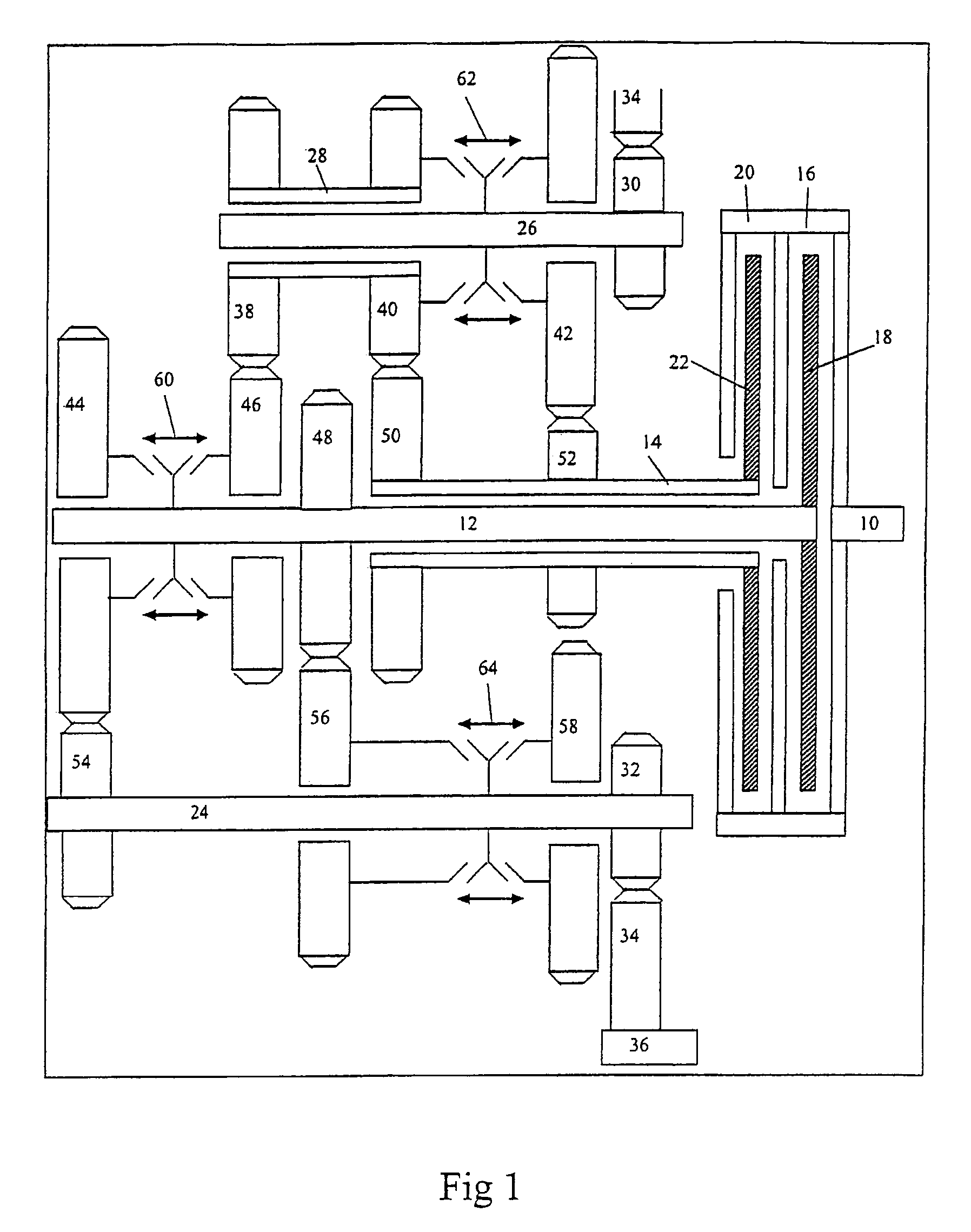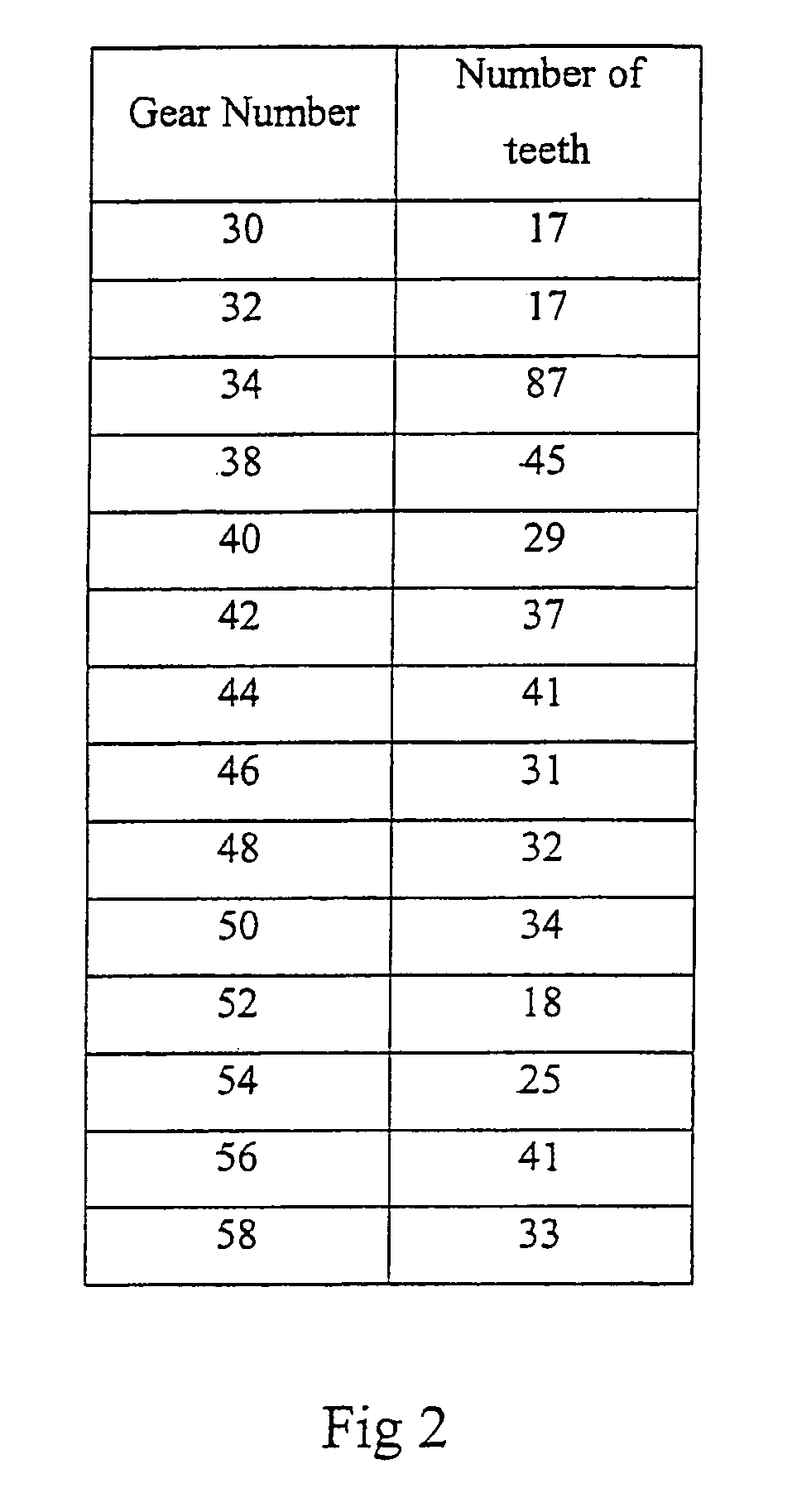Gear selection strategy for a dual clutch transmission
a dual clutch transmission and gear selection technology, applied in the direction of gearing, mechanical equipment, transportation and packaging, etc., can solve the problems of affecting the efficiency of asm transmission, affecting the efficiency of dual clutch transmission, and limited the rate at which they can dissipate excess power, so as to achieve low reverse ratio
- Summary
- Abstract
- Description
- Claims
- Application Information
AI Technical Summary
Benefits of technology
Problems solved by technology
Method used
Image
Examples
Embodiment Construction
[0027]Referring to FIG. 1, a transaxle includes an input 10 for driveably connecting a power source, such as an internal combustion engine or electric motor, to the transmission, and an output 36 for driving a load, such as the driven wheels of a motor vehicle, through a powertrain that may include a drive shaft, differential mechanism, and axle shafts. A first friction clutch 20, consisting of a clutch housing and a clutch disc 22, alternately connects and disconnects a first input shaft 14 as clutch 20 is engaged and disengaged, respectively. A second friction clutch 16, consisting of a clutch housing and a clutch disc 18, connects and disconnects a second input shaft 12 as clutch 16 is engaged and disengaged, respectively.
[0028]A first layshaft 26 supports a first output pinion 30, which is secured to layshaft 26 in continuous meshing engagement with an output ring gear 34, secured to output 36. A second layshaft 24 supports a second output pinion 32, which is secured to the lays...
PUM
 Login to View More
Login to View More Abstract
Description
Claims
Application Information
 Login to View More
Login to View More - R&D
- Intellectual Property
- Life Sciences
- Materials
- Tech Scout
- Unparalleled Data Quality
- Higher Quality Content
- 60% Fewer Hallucinations
Browse by: Latest US Patents, China's latest patents, Technical Efficacy Thesaurus, Application Domain, Technology Topic, Popular Technical Reports.
© 2025 PatSnap. All rights reserved.Legal|Privacy policy|Modern Slavery Act Transparency Statement|Sitemap|About US| Contact US: help@patsnap.com



